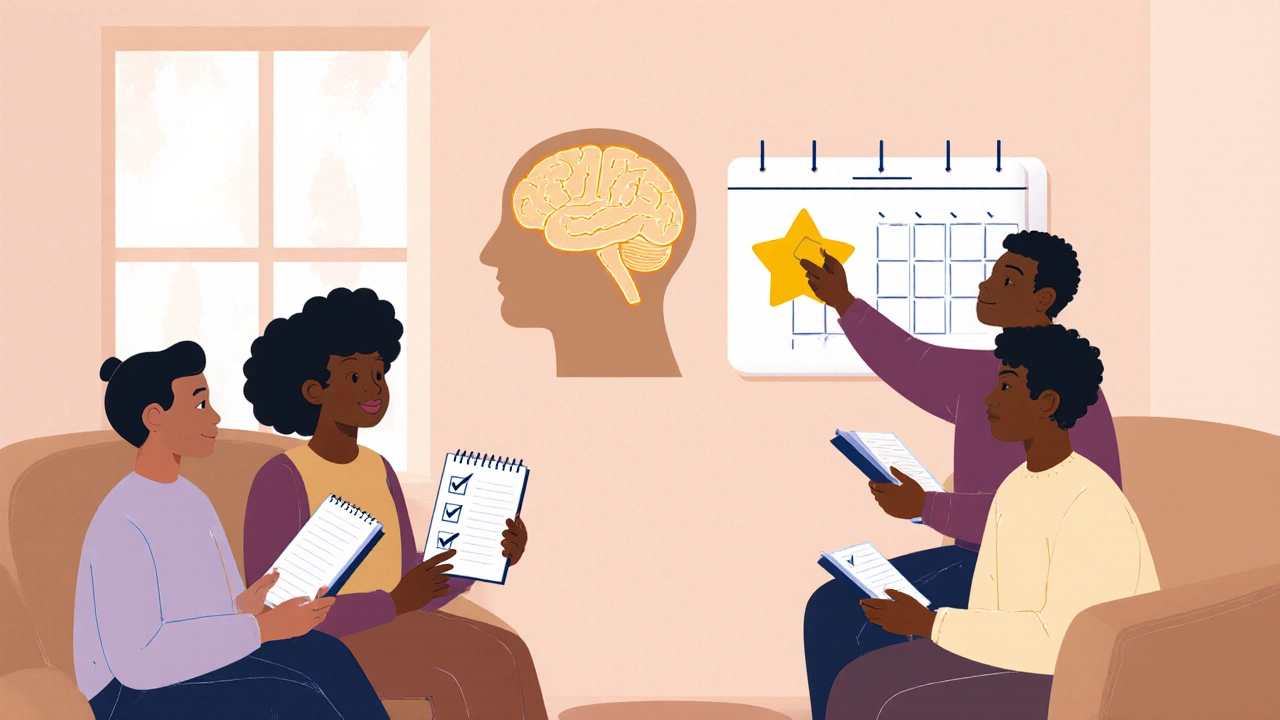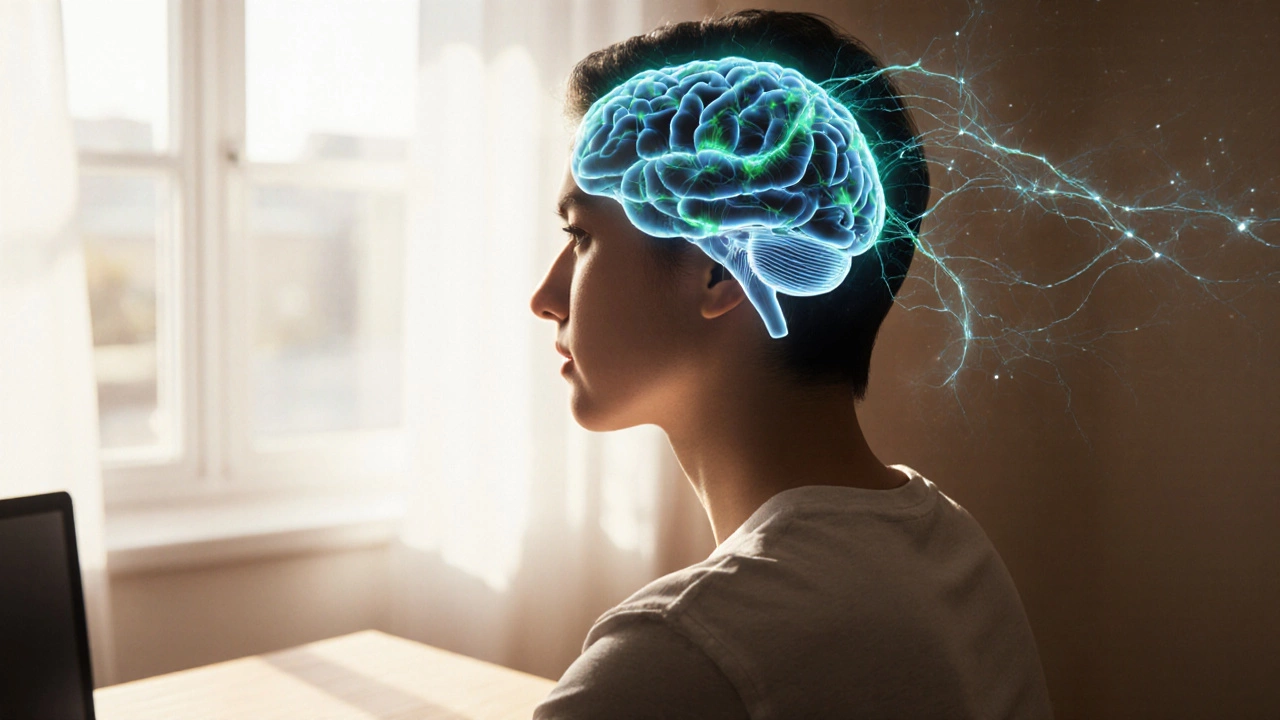Mindset Formation Quiz
Which of these describes a growth mindset?
How does dopamine contribute to mindset change?
What is neuroplasticity?
In the habit loop, what is the 'reward' component?
What is recommended for shifting to a growth mindset?
When we talk about Mindset is a set of habitual mental attitudes that shape how we interpret experiences and make decisions, the first question most people ask is: how does it actually get built inside us? The short answer is that mindset is the product of brain wiring, repeated actions, and the stories we tell ourselves. Below we’ll break down the science, the daily habits, and the subtle cues that together create the mindset formation process.
Why the Brain Matters
The brain isn’t a static organ; it constantly rewires itself through Neuroplasticity the ability of neural networks to change their connections based on experience. When you repeatedly think, feel, or act in a certain way, the underlying neural pathways become stronger, while unused routes weaken. This is why a decade of negative self‑talk can feel like a permanent fixture, yet a few weeks of focused practice can flip the script.
Habit Loop: The Engine Behind Mindset
Charles Duhigg’s habit loop-cue, routine, reward-explains how automatic behaviors cement mental patterns. The cue triggers a mental state; the routine is the behavior you perform; the reward reinforces the loop. Over time, the loop shifts from a surface habit to a deeper belief about yourself. For example, receiving a stressful email (cue) leads you to check it compulsively (routine) and feeling ‘in control’ (reward). The brain starts to label you as someone who must stay constantly connected, which becomes part of your work‑focused mindset.
Cognitive Biases That Tilt the Scale
Our thinking is filtered through a set of shortcuts called Cognitive Bias systematic patterns of deviation from norm or rationality in judgment. Confirmation bias, for instance, makes us seek evidence that fits our existing mindset and ignore contradictory data. The anchoring effect can lock us into the first impression we form, shaping subsequent attitudes. Recognizing these biases is the first step toward dismantling a limiting mindset.
Brain Regions That Play a Role
The Prefrontal Cortex the brain area responsible for planning, decision‑making, and self‑control acts as the executive hub for mindset changes. It regulates emotional responses from the amygdala and coordinates goal‑directed behavior. When we practice new ways of thinking, the prefrontal cortex strengthens its connections, allowing us to override old, automatic reactions.

The Dopamine Hook
Motivation and reward are coded by Dopamine a neurotransmitter that signals pleasure and reinforces behavior. Small wins-like successfully completing a challenging task-release dopamine, making the brain want to repeat the behavior. This biochemical loop is why celebrating tiny progress helps cement a growth‑oriented mindset.
Fixed vs. Growth Mindset: A Quick Comparison
| Aspect | Fixed Mindset | Growth Mindset |
|---|---|---|
| Belief about ability | Talent is static | Ability can be developed |
| Response to failure | Avoids challenges | Sees failure as learning |
| Effort perception | Useless effort | Path to mastery |
| Feedback handling | Defensive | Welcomes critique |
The distinction isn’t just academic; it predicts how people approach learning, relationships, and career growth. By shifting from a fixed to a growth orientation, you essentially rewire the neural pathways that support perseverance and curiosity.
Self‑Talk and Mental Narratives
The stories we narrate to ourselves are powerful drivers of mindset. Positive self‑talk activates the reward centers, while negative narratives trigger the stress response. A practical trick is to catch the first negative thought, label it (“I’m having a self‑critical thought”), and replace it with a neutral or empowering statement. This pause interrupts the automatic bias loop and gives the prefrontal cortex a chance to reframe the situation.

Environment and Social Learning
We don’t develop in a vacuum. The people we surround ourselves with and the cultural cues we absorb act as external scaffolding for mindset. Albert Bandura’s social learning theory shows that observing others succeed through effort encourages us to adopt similar beliefs. Joining a community that values learning-like a book club or a skill‑share group-creates a feedback loop that reinforces a growth‑focused outlook.
Practical Steps to Shape a New Mindset
- Identify a limiting belief and write it down.
- Find a small, measurable action that challenges that belief.
- Set a daily micro‑goal and track progress for at least 21 days (the habit formation window).
- Celebrate each win-no matter how tiny-to trigger dopamine release.
- Seek feedback from a trusted mentor or peer each week.
- Replace negative self‑talk with a growth‑oriented phrase within seconds of noticing it.
Consistency is the glue that holds all these elements together. Over weeks, your brain’s wiring will reflect the new patterns, and the mindset will feel like a natural part of who you are.
Common Pitfalls and How to Avoid Them
- Going too fast. Sudden, massive shifts create resistance; start with micro‑changes.
- Ignoring setbacks. Treat them as data, not proof of failure.
- Relying on willpower alone. Design the environment to reduce friction (e.g., keep learning resources visible).
- Neglecting social support. Share goals publicly to add accountability.
Key Takeaways
- Mindset is built through neuroplastic changes driven by repeated thoughts and actions.
- Habit loops, dopamine rewards, and cognitive biases shape the automatic nature of mindset.
- Switching from a fixed to a growth mindset rewires the prefrontal cortex and improves resilience.
- Environment, social learning, and intentional self‑talk are powerful levers for change.
- Small, consistent actions over at least three weeks lay the foundation for lasting mindset shifts.
What is the difference between a fixed and a growth mindset?
A fixed mindset believes abilities are static, leading to avoidance of challenges. A growth mindset sees abilities as developable, embracing effort and learning from failure.
How long does it take to form a new mindset?
Research suggests habit formation takes about 21‑30 days, but solidifying a new mindset can require 3‑6 months of consistent practice.
Can neuroplasticity be improved in adulthood?
Yes. Engaging in novel learning, physical exercise, and mindful practices boosts neuroplasticity even later in life.
What role does dopamine play in mindset change?
Dopamine reinforces rewarding actions. Celebrating small wins releases dopamine, making the brain more likely to repeat the behavior that supports a new mindset.
How can I use self‑talk to shift my mindset?
Catch a negative thought, label it, then intentionally replace it with a positive or neutral statement. Repeating this within seconds retrains the brain’s response pattern.






